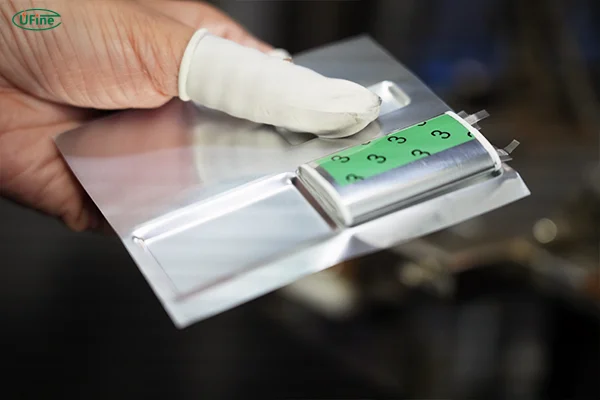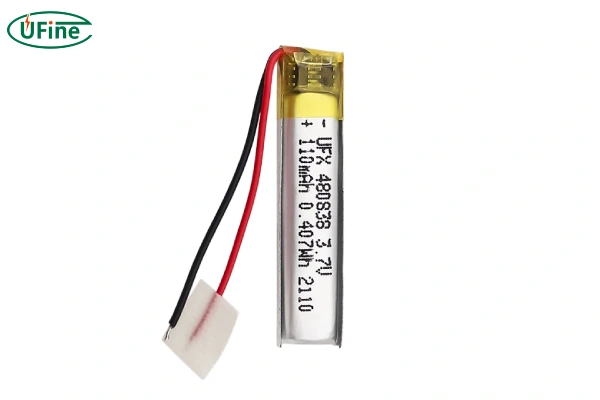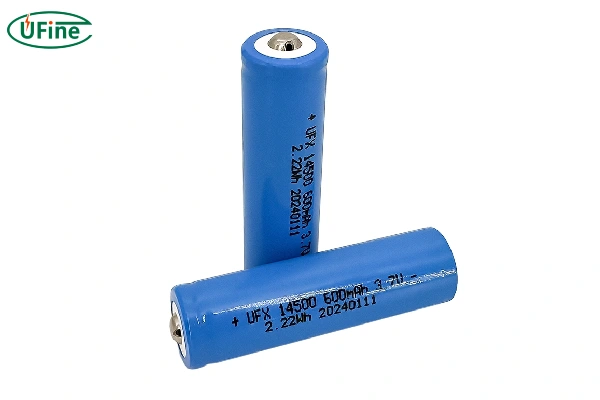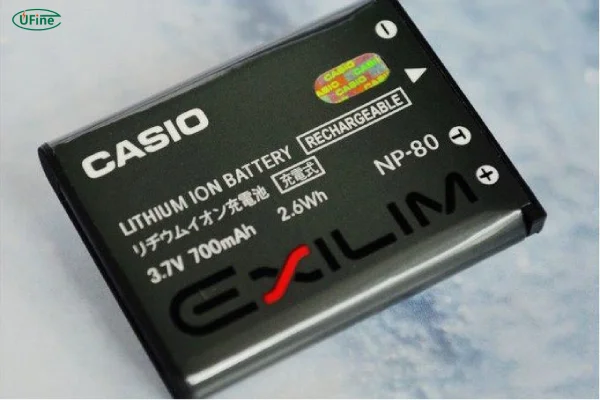In an age where portable electronics dominate our daily lives, the 3.7 volt rechargeable battery plays a pivotal role. These batteries power many devices, from smartphones to drones, making them indispensable. This article delves into the intricacies of 3.7 volt batteries, covering their types, sizes, uses, and essential tips for selection and maintenance.
Part 1. What is the 3.7 volt rechargeable battery?
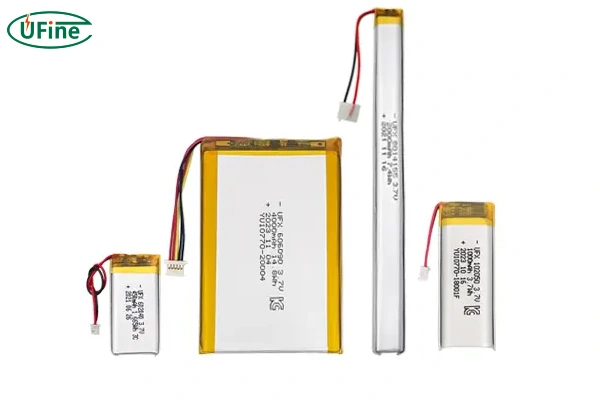
A 3.7 volt rechargeable battery is a lithium-based battery that provides a nominal voltage of 3.7 volts. These batteries are often based on lithium-ion (Li-ion) or lithium-polymer (LiPo) chemistry, Renowned for their high energy density, these batteries are designed to be recharged and used multiple times. They are ubiquitous in modern electronics due to their efficiency, longevity, and lightweight properties.
Basic Structure and Components:
- Anode (Negative Electrode): Typically made from graphite.
- Cathode (Positive Electrode): Often composed of lithium metal oxides such as lithium cobalt oxide (LiCoO₂).
- Electrolyte: A lithium salt dissolved in an organic solvent that facilitates ion movement between electrodes.
- Separator: A permeable membrane that prevents physical contact between the anode and cathode while allowing ion flow.
Chemistry and Characteristics:
- These batteries operate based on the movement of lithium ions between the anode and cathode during charge and discharge cycles.
- Key characteristics include high energy density, lightweight design, and a nominal voltage of 3.7V.
- They exhibit minimal memory effect and have a long cycle life when properly maintained.
Part 2. 3.7 volt rechargeable battery type
Several types of 3.7 volt batteries exist, each tailored for specific applications:
- 3.7 V Lithium-Ion (Li-ion) Battery: These are the most common, known for their high energy density and lightweight design. They are widely used in consumer electronics such as smartphones, laptops, and cameras.
- 3.7 V Lithium Polymer (Li-Po) Battery: Characterized by their flexible, lightweight design, Li-Po batteries are often found in drones, RC vehicles, and other devices where weight is a critical factor.
Part 3. 3.7 volt rechargeable battery size
From the above, we can know that the 3.7V rechargeable batteries on the market mainly include lithium-ion batteries, and lithium polymer batteries. Therefore, when describing the size, we also divide them into the following two types.
In fact, except for cylindrical batteries, which have unified size standards, the other type of batteries do not have unified sizes. The size of lithium polymer batteries will vary due to different capacities and manufacturers’ production processes, and there is no uniform size.
3.7 volt rechargeable batteries come in various sizes to suit different devices and applications. Here are some common sizes:
1. Lithium Polymer (LiPo) Batteries:
LiPo batteries are known for their high energy density and compact, flexible form factors. 3.7V LiPo batteries do not have a uniform size.
One of their characteristics is that they are flexible and can be customized in size. Some typical LiPo battery sizes include:
- 500mAh – Dimensions: Approximately 30mm x 20mm x 5mm
- 1000mAh – Dimensions: Approximately 35mm x 25mm x 10mm
- 2200mAh – Dimensions: Approximately 60mm x 34mm x 10mm
2. Cylindrical Lithium-ion (Li-ion) Batteries:
Cylindrical Li-ion batteries are available in various sizes, with the most common being 18650, 26650 and 14500.
- 18650 battery: Measuring 18mm in diameter and 65mm in length, these are widely used in laptops, flashlights, and electric vehicles due to their balanced capacity and size.
- 26650 battery: Larger at 26mm in diameter and 65mm in length, these batteries are often used in high-drain devices like power tools and high-performance flashlights.
- 14500 battery: With 14mm in diameter and 50mm in length, they are similar to AA batteries and are used in smaller electronics such as flashlights and portable devices.
Part 4. What are 3.7 volt batteries used for?
The versatility of 3.7 volt batteries makes them suitable for a wide range of applications:
- Consumer Electronics: Smartphones, tablets, laptops, and cameras.
- Portable Devices: Flashlights, e-cigarettes, and handheld gaming devices.
- Toys and Hobbies: Drones, RC cars, and other remote-controlled devices.
- Power Tools: Cordless drills, saws, and other battery-powered tools.
- Medical Devices: Portable medical equipment that requires reliable power.
Part 5. Are all 3.7 volt batteries rechargeable?
Not all 3.7 volt batteries are rechargeable. Some are designed for single use and are known as primary batteries.
Part 6. 3.7 V Battery Charging Voltage Change
When charging a 3.7-volt rechargeable battery, the voltage varies throughout the process. The standard charging method involves two stages:
Constant Current (CC) Phase:
The charger applies a steady current to the battery.
The voltage gradually increases from its discharged state (usually around 3.0V) to about 4.2V.
Constant Voltage (CV) Phase:
Once the battery reaches 4.2V, the charger maintains this voltage while reducing the current.
Charging continues until the current drops to a minimal level, indicating the battery is fully charged.
It is crucial not to exceed the 4.2V limit to avoid overcharging, which could damage the battery or pose safety risks.
Part 7. At what voltage is a 3.7 volt rechargeable battery dead?
A 3.7 volt battery is considered dead when its voltage drops to around 3.0 volts. At this point, the battery can no longer hold a charge efficiently and should be replaced to avoid potential damage to the device it powers.
Part 8. How long does a 3.7 volt battery last?
The lifespan of a 3.7 volt rechargeable battery varies depending on its type:
- Li-ion battery: Typically lasts between 300 to 500 charge cycles.
- Li-Po battery: Generally lasts between 200 to 300 charge cycles.
Part 9. 3.7 volt battery charger
Various types of chargers are available for 3.7 volt rechargeable batteries:
- Universal Chargers: These can accommodate multiple battery sizes and types, offering flexibility for users with different batteries.
- USB Chargers: Convenient and portable, these chargers are ideal for small devices and can be powered through USB ports.
- Dedicated Chargers: Designed specifically for certain battery types, ensure optimal charging conditions and safety.
Part 10. How to recharge a 3.7 volt battery?
To ensure the safe and efficient charging of your 3.7 volt rechargeable battery, you can follow these steps:
- Choose the Right Charger: Use a charger that is compatible with your battery type and size. Avoid using generic chargers that don’t match the specifications of your battery.
- Check the Battery Condition: Before charging, inspect the battery for any signs of damage, such as swelling, leaks, or corrosion. Do not charge a damaged battery.
- Connect the Battery: Insert the battery into the charger, ensuring proper alignment of the positive and negative terminals. Some chargers have indicator lights to confirm correct placement.
- Monitor the Charging Process: Keep an eye on the charging process. Some chargers have automatic shut-off features when the battery is fully charged, while others may require manual monitoring.
- Avoid Overcharging: Overcharging can reduce battery life and increase the risk of overheating or fire. Remove the battery from the charger once it is fully charged.
- Store Properly: If you’re not using the battery immediately, store it in a cool, dry place away from direct sunlight and extreme temperatures.
Part 11. The effect of temperature on 3.7 Volt rechargeable battery
Temperature significantly impacts the performance and lifespan of a 3.7V rechargeable battery:
- High Temperatures: Prolonged exposure to heat can cause chemical degradation, leading to capacity loss and potential safety hazards, such as thermal runaway.
- Low Temperatures: Performance decreases as chemical reactions slow down, reducing capacity and output.
- Optimal Temperature Range: For most 3.7V batteries, the recommended operating temperature is between 20°C and 25°C. This range ensures stability, longevity, and efficiency.
Avoid extreme conditions and ensure proper ventilation to maintain stability.
Part 12. How to choose the right 3.7 volt rechargeable battery?
To maximize the lifespan and performance of your 3.7 volt rechargeable battery, you can consider the following maintenance tips:
- Regular Use: Batteries perform best when used regularly. If you have spare batteries, rotate them to ensure they all maintain their charge cycles.
- Avoid Deep Discharge: Try not to let the battery discharge completely. Recharging when the battery reaches around 20-30% can help prolong its life.
- Proper Storage: Store batteries at about 50% charge if they are not used for an extended period. This helps prevent capacity loss.
- Temperature Management: Keep batteries away from excessive heat and cold. Extreme temperatures can degrade battery performance and lifespan.
- Clean Contacts: Periodically clean the battery contacts with a dry cloth to ensure a good connection and efficient charging.
Part 13. Storage
Proper storage is essential to prolong the lifespan of 3.7V rechargeable batteries:
- Charge Level: Store batteries at around 40-60% charge to minimize stress on the cells.
- Environment: Keep them in a cool, dry place away from direct sunlight and moisture.
- Temperature Range: Store batteries between -20°C and 25°C for optimal results.
- Avoid Long-Term Discharge: Regularly check and recharge stored batteries to prevent deep discharge, which can damage their capacity.
Part 14. Recycling
Recycling 3.7V rechargeable batteries is crucial for environmental sustainability:
- Environmental Impact: Improper disposal can release harmful chemicals into the environment.
- Recycling Programs: Many manufacturers and local waste management facilities offer battery recycling programs.
- Disposal Guidelines:
- Do not throw batteries in regular trash.
- Seal battery terminals with tape to prevent short-circuits.
- Deposit them in designated recycling bins or drop-off centers.
By recycling, you help conserve valuable materials like lithium, cobalt, and nickel while reducing waste.
Related Tags:
More Articles

LiPo Battery Discharge Rate Guide & Calculation Tips
Understand LiPo battery discharge rates, C-ratings, and how to calculate max current. Essential guide for RC, drones, and electronics users.
High‑Capacity 3S LiPo Batteries: 5000 mAh vs. 10000 mAh
Compare 3S LiPo 5000mAh vs 10000mAh batteries by weight, power, and use. Find the best fit for your drone, RC car, or boat setup.
Top 5 Applications for Small 3S LiPo Batteries
Small 3S LiPo batteries power drones, RC gear, wearables, and robotics with high energy and low weight. Making them ideal for compact electronics projects.
Building and Charging Your Own 3S LiPo Pack: A Step‑by‑Step Guide
Learn how to build, balance, and charge a 3S LiPo battery pack safely at home with this complete DIY guide for hobbyists and beginners.
How to Choose the Right LiPo Battery Plug Type?
Discover the best LiPo battery plug types, how to choose them, and expert tips for safe usage, soldering, and maintenance.
